Ecommerce KPIs and metrics help you measure performance of your ecommerce business and grow your online store. Here are the top Ecommerce KPIs & metrics you must track regularly. You can use this Ecommerce KPI list to get business insights and make better decisions faster.
Top Ecommerce KPIs & Metrics to Track
Here are the top ecommerce KPIs & metrics you must monitor regularly. You can use a dashboard software to create an Ecommerce KPI dashboard to track these metrics.
1. Gross Profit Margin
Gross Profit Margin is one of the most important Ecommerce KPIs & metrics for every online business.
Gross profit margin = (revenue earned – costs of goods sold) ÷ revenue
When you measure cost of goods sold in the above formula, include all costs that are directly related to your products, but do not include operating expenses, employee salary, taxes & interests.
Gross Profit Margin is what you are left with, after selling your products. It tells how much profit you make for every product you sell.
You can monitor monthly gross profit margin on a line chart using a data visualization software.
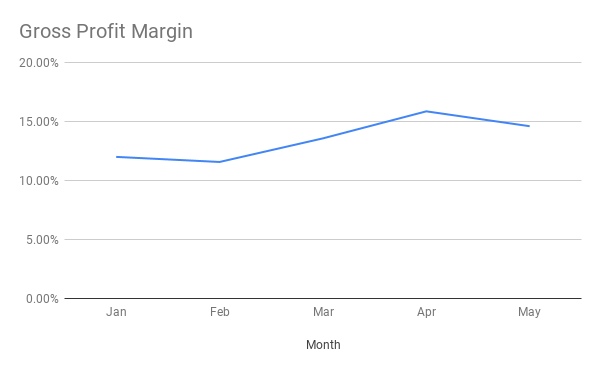
Further, you can break down gross profit margin for each product category to identify profitable products and promote them more.
Bonus Read : How to Improve Your Business Dashboard
2. Net Profit
Net profit is one of the most popular Ecommerce KPIs you should track regularly. It measures the profit after deducting all expenses from your income.
Net Profit = Total Revenue – Total Expenses
Net Profit tells how much money you have left to invest back into your business. Monitor Net Profit regularly, to ensure your business doesn’t run into losses.
You can also track net profit in a column chart, using a dashboard software.
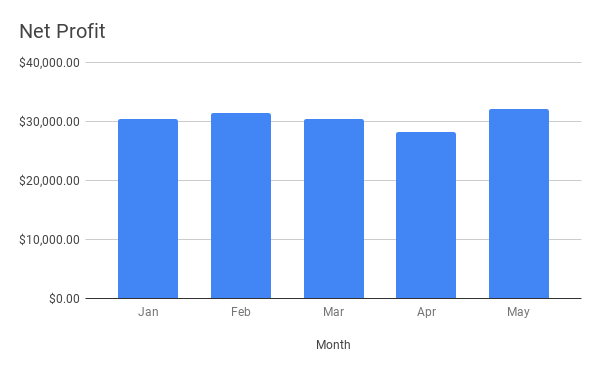
Like Gross profit margin, you can break down net profit by product category as well as marketing channels, to identify lucrative products and marketing channels for your business.
Bonus Read : Key Website Performance Metrics & KPIs
3. Cart Abandonment Rate
Cart Abandonment Rate is the percent of users who add products to their shopping cart but leave just before completing their purchase. A high abandonment rate can mean serious problems such as limited payment options, difficult checkout flow, that need urgent attention.
You can monitor overall abandonment rate as a single number
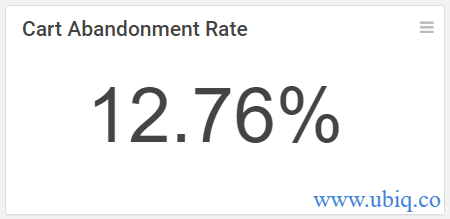
You can also monitor daily abandonment rate to find out how your website changes are affecting checkout experience.
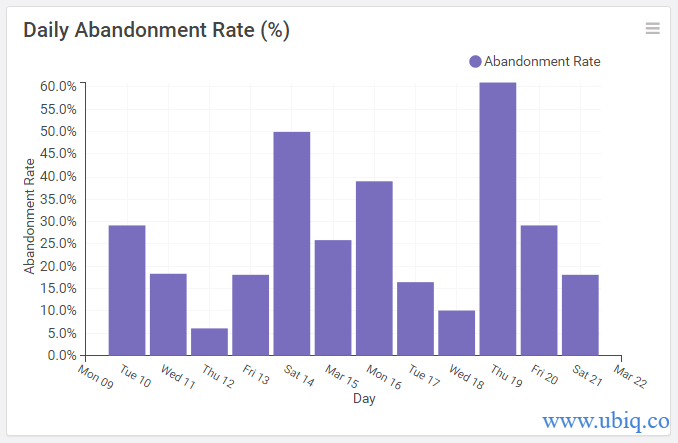
Bonus Read : What to Include in Executive Dashboard
4. Average Order Size
Average Order Size is the average amount of purchase done by a customer.
Average Order Size = Total Revenue / Total Number of Orders
It is one of the most useful Ecommerce KPIs & metrics. It shows how much revenue you can expect from each customer, on an average. You can compare it with marketing spend per customer and check if you are overspending.
You can track overall average order size as a single number.

You can also track average order size for each category to determine whether to increase/decrease budget for each category.
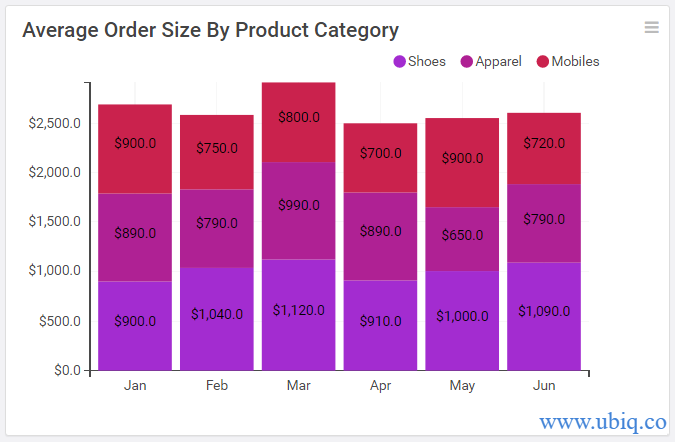
Similarly, you can break down average order size by city to identify lucrative customer locations.
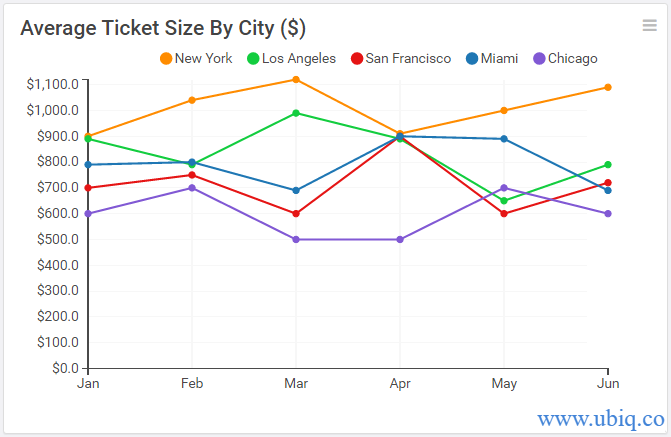
Bonus Read : Top Call Center KPIs & Metrics
5. Customer Acquisition Cost (CAC)
It is important to measure how much money you spend to acquire each customer, on an average. Customer Acquisition Cost is the total amount spent on acquiring customers over 1 month, divided by the number of customers acquired during that period.
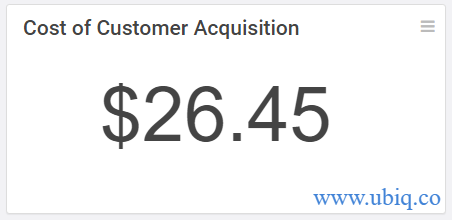
If your customer acquisition cost is more than average order size, it means you are losing money on every customer and your business will make losses quickly. In that case, you can cut marketing costs, or increase prices.
6. Conversion Rate
Conversion Rate is the percent of users who have completed a desired action such as signing up for your ecommerce website, adding a product to shopping cart, completing purchase, etc.
To begin with, you can track monthly conversion rate by product category to identify which ones need attention.
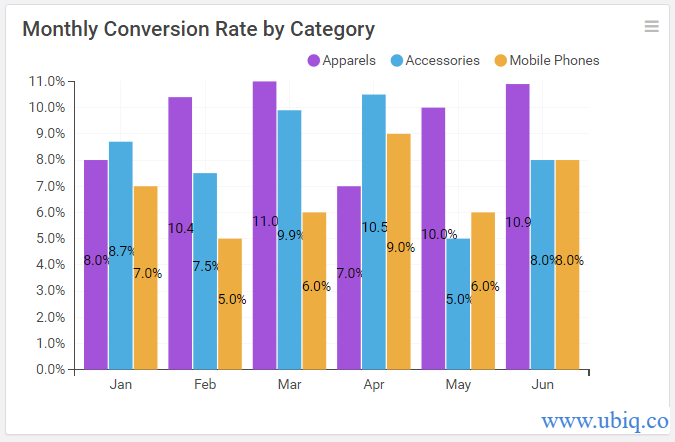
You can also measure conversion rate for each marketing channel, to find out which ones bring more customers.
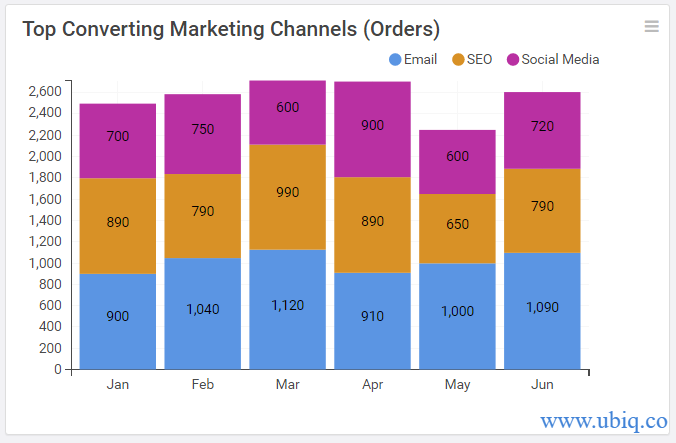
There are many ecommerce KPIs and metrics but these are the top 10 Ecommerce KPIs that matter. If you don’t track them regularly, your business might go in a wrong direction and you might not even realize it. So plot them on an Ecommerce KPI dashboard using a dashboard software like Ubiq, as shown below and share them with your team.
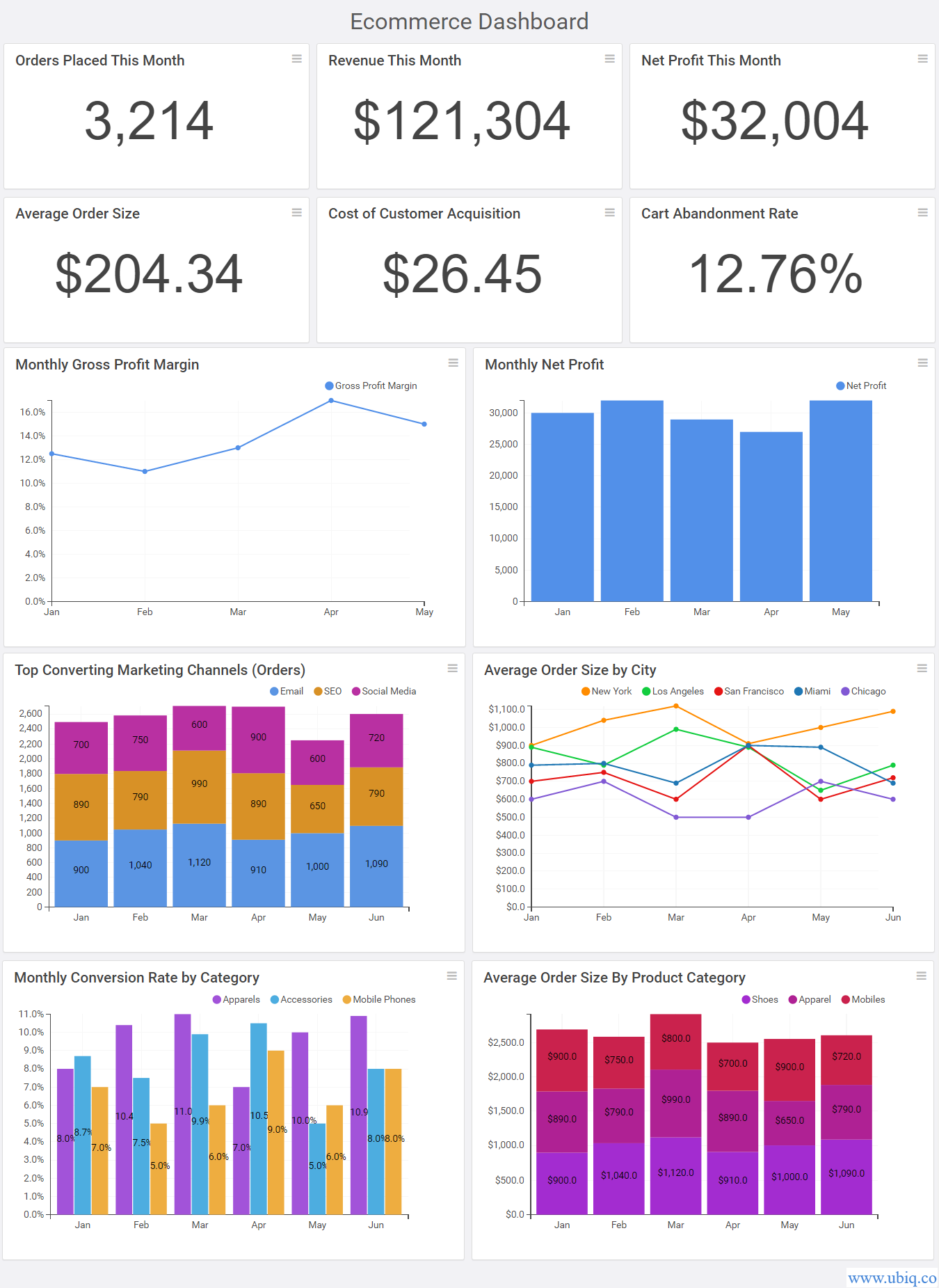
Hopefully, the above-mentioned key ecommerce KPIs and metrics examples will help you improve your online business.
If you want to create Ecommerce KPI dashboard, reports & charts, you can try Ubiq. We offer a 14-day free trial!
Sreeram Sreenivasan is the Founder of Ubiq. He has helped many Fortune 500 companies in the areas of BI & software development.